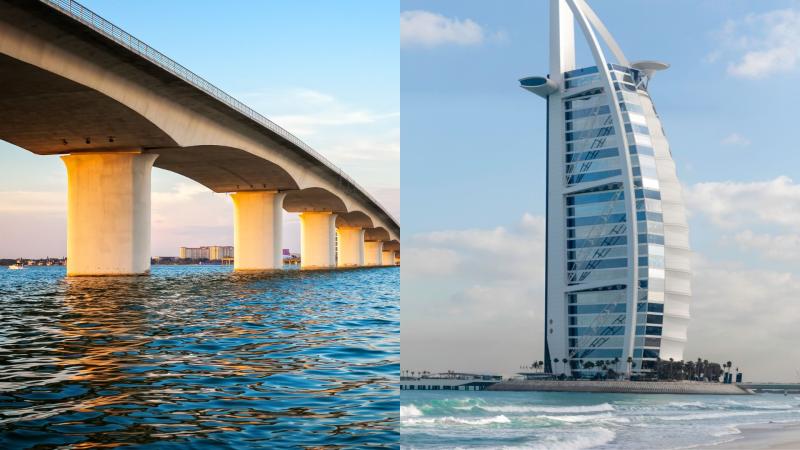
Despite our confinement to land, humanity has expanded its domain into the oceans with structures, like bridges, oil rigs, homes and even an entire island. To stay afloat, these massive floating structures must withstand the relentless power of ocean waves. These structures are constantly battered by waves, which can cause them to sway and even sustain damage. With the increasing need for space and the growing threat of extreme weather events, such as storms and cyclones, engineers are constantly seeking innovative ways to build more resilient structures on water, capable of withstanding the power of the ocean.
One way to protect structures from waves might be to build porous walls around them, according to a new study from the Indian Institute of Technology (IIT) Guwahati. The researchers focused on a specific type of floating structure and investigated methods to enhance its resilience. Their study found that adding porous walls to the sides of the structure behaves like a sponge, absorbing and dissipating the energy of the incoming waves, much like a breakwater.
Did You Know? Floating Architecture includes structures like permanently moored homes, pavilions, and even floating cities designed to address rising sea levels and flooding by allowing the structure to rise and fall with the water. |
The study employed a mathematical model to simulate the interaction between waves and a floating structure equipped with porous walls. They considered a realistic scenario where the ocean floor isn't flat but has a varying slope, which adds another layer of complexity to how waves behave. The researchers divided the entire area around the floating structure into nine distinct regions, each with its own set of rules governing water movement. For most of these regions, they used a method called separation of variables and eigenfunction expansion to describe the water's motion. However, for the section with the sloping seabed, they employed a more complex technique known as the modified mild-slope equation.
By calculating how the water's pressure and movement (or velocity potential) matched up across the boundaries between these different regions, they were able to build a complete picture of the wave's behaviour. This allowed them to determine how much wave energy was reflected back, how much passed through, and, most importantly, how much force was actually exerted on the floating structure. They then used computer simulations to test various designs, adjusting factors such as the porosity of the walls (how "holey" they are), their thickness, the depth to which they extended into the water (their draft), and the amount of friction they created.
The study found that porous walls are pretty effective at dissipating the energy. As the friction factor of the porous walls increased, meaning they were rougher and better at slowing down the water, the amount of wave energy reflected back decreased. Similarly, making the porous walls thicker or increasing their draft also helped reduce both the reflected and transmitted waves. The study also highlighted the impact of the seabed's slope. They discovered that a gentler slope on the seabed generally led to lower reflection and transmission of waves, and significantly reduced the forces acting on the floating structure compared to a steeper slope. This is because a gentler slope allows waves to spread out and lose energy more gradually.
This research employs a comprehensive approach to provide a more realistic and accurate understanding of how structures perform in real-world ocean conditions. The researchers also validated their model by comparing its results with those of two other established studies, showing excellent agreement and confirming the reliability of their findings. While the study uses linear wave theory, which has some limitations for very steep waves, it's a widely accepted approach that provides valuable insights for many engineering applications.
By understanding how to optimise the design of these porous walls and considering the seabed's characteristics, engineers can create floating structures that are much more stable and resistant to wave damage. This could lead to safer floating bridges, airports, and even entire floating cities, especially in areas prone to rough seas. It offers a pathway to designing more resilient infrastructure that can better withstand the challenges posed by our dynamic oceans, contributing to greater safety and sustainability in marine engineering.
This article was written with the help of generative AI and edited by an editor at Research Matters.






